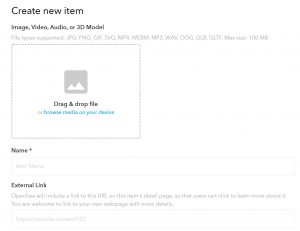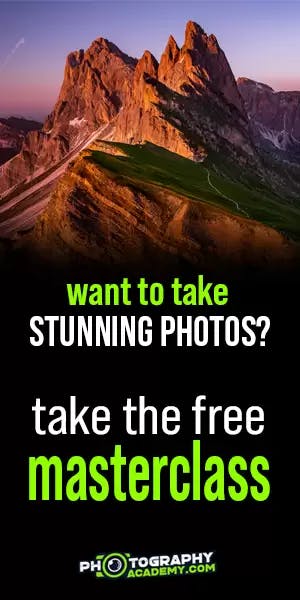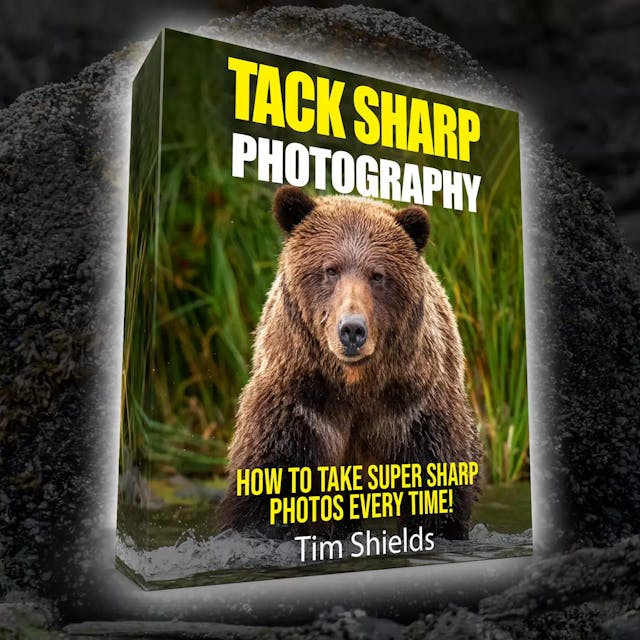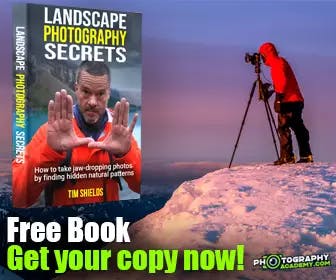If you’ve heard of Bitcoin, by now you may have heard of the latest Internet Blockchain craze where artists are making big money selling NFTs, or Non-Fungible Tokens. Recently, digital assets like this have sold at official high-end art auctions, like Christie’s, for as much as 69.3 million US. NFTs are a new way for artists to sell their work, and are likely to be far more than just a phase in the digital marketplace. But how do they work?
Fungible is a fancy term for replaceable. So you can always buy a new banana, but you can’t just duct tape that banana to a wall and call it an original $120,000 Maurizio Cattelan artwork. To do that, you need the fungible banana and duct tape as well as the non-fungible certificate of authenticity.
NFTs are that certificate of authenticity. But now you don’t need to do all of the fancy paperwork — you can instead pay a small fee to use a digital blockchain crypto network like Ethereum to do that for you.
To get started selling NFTs there are a few things you’ll need.
- A piece of original art
- A free digital wallet, like MetaMask
- An amount of Ethereum for ‘Gas Money’ to post the NFT for sale. The amount changes based on the desired sale type of your NFT.
At the time of writing, the amount of Ethereum you’ll need to put an NFT up for sale is about $100 USD. So you’ll need to factor the Ether as well as a 2.5% seller’s fee into the cost of any work that you’re selling. You can choose to sell the item for a specific amount, or sell it to the highest bidder in an auction. Afterward, you’ll receive a small percentage in royalties every time it sells thereafter.

How do I create an NFT?

Creating and NFT is a very simple and free process. You don’t have to pay any money until you decide to sell it
The first thing you’ll need is to sign up for MetaMask, which is a browser extension that’ll act as a cryptocurrency wallet, and allow you to digitally sign NFTs. It works in Google Chrome, Microsoft Edge, Firefox, and Brave. At this point, it doesn’t work with Safari.

Signing up takes about 10 minutes, and will prompt you to create a password and save a set of 12 random words in a specific order. Save this phrase in a secure place. Either write it down or store it on an offline hard drive so that hackers won’t be able to access them. The 12 words will be used to re-access your account if you change computers or lose your password.
Once you’ve signed up and saved your access codes, you can navigate to OpenSea.io to start creating NFTs for free. You’ll need the MetaMask extension to be active in your browser so that it can digitally authenticate your actions on OpenSea.io. If you notice that nothing happens when you click a button on OpenSea.io, the reason is likely because you need to sign the request using the MetaMask Extension. Open the extension, and click ‘sign’ to proceed.
Start by clicking Create A New Collection. This is a library that you’ll use to organize your NFTs. Give it a name, as well as an option logo and description, then click the Create button at the bottom.

Creating an NFT

Once your collection is ready, you can start uploading files by clicking “Add New Item”. From here, drag and drop your image onto the browser section, give it a title and a description. Then, there are a few optional features that can help organize the NFTs in your collection.
Stats, Levels, and Properties are all traits that users can see and help to filter the items in your collection. You can also turn on unlockable content if there is an unpublished feature or an image that is only given to the buyer of the NFT. Unlockable content can be a bonus exclusivity that adds value to the buyer.
The last option is to adjust the amount of the NFT that you’d like to offer for sale. As of March 15, 2021, it’s only possible to make a single minted version for sale on OpenSea.io. However, there is a message saying that the feature to create more than one minting will be available in time.
Once you’re finished, click create, and you officially have your first NFT!

How to Start Selling an NFT
Everything up to this point is free. The only time that you have to make a purchase is if you decide to sell your NFT on the OpenSea.io market. The marketplace calls the fee ‘gas,’ which is necessary for using the Ethereum blockchain network that keeps track of sales and ownership of NFTs. As of March 2021, the amount of ‘gas’ users have to pay is 0.0549 Ethereum.
In this world, OpenSea is the auction house, which takes a 2.5% cut of every sale as its fee for service. To get started auctioning off your NFTs on the OpenSea network, click the Sell button on the top right.
There are three options to sell your NFTs. For a set price, to the highest bidder, or as part of a group of NFTs. For new sellers, the Auction method can ensure you’re getting the best available price for your art. You can set a reserve price and a minimum starting bid that’ll make sure you’re covering the cost of gas in the sale.
If you choose to sell the item for a set price, you can choose how much you’d like it to sell for, and decide if you’d like the listing to end over time. If it ends before a sale is made, you will lose the cost of the gas to make the sale. To protect yourself from that loss, you can choose to let the listing price go down over time.
Once you’ve chosen your desired option for the sale, click post your listing, put forward your gas money, and get selling!

What rights do I give the buyer of an NFT?
NFTs are a bit tricky, but as it stands right now, the only thing you’re selling is a certificate of authenticity. An NFT buyer does not have the right to reproduce or make money from the product that they’re buying.
If anything, it’s like having a signed copy of a photo book. You can read that book, recycle it, tear out some pages, dog-ear the corners, or make notes inside it. But you can’t copy the words inside it and sell the book as your own.
So that means if you sell your artwork as an NFT, you don’t have to worry about that buyer then making prints of your work and selling it on Etsy, T-Shirts, coffee mugs, or another marketplace. They can have it on their computer monitors, and charge people a fee to come to see it, but that’s about it. The only piece of your work that they’ll be able to sell in the future is the NFT they bought. And if they do sell it, you’ll have the option to collect royalties on the amount that it sells for.
The beauty of the NFT market and the reason that it’s becoming so popular is because of the protections the blockchain offers artists. This new trend is allowing artists to sell limited versions of their work for higher prices. And with the sales at Christie’s and other auction houses, it’s quickly becoming a plausible way to earn a living with art.

Can people make NFTs from my artwork without my permission?
This is the biggest hurdle in the blockchain market right now. I recently uploaded a photo and created an NFT that I’ll be putting on sale. Nowhere in that process did OpenSea try to verify the ownership of that artwork. It didn’t even ask me a yes or no question if I was allowed to sell it.
There have been cases on Twitter where some users have had their artwork stolen, minted, and sold by pirates. At the moment, there’s little to no recourse even with artists’ copyright protections in US law.
Anyone on the Internet can screenshot anything and turn it into an NFT. Before I made my profile, they could even steal my name and make it off as their own. And there’s little I could do to stop them. Of course, the resale value of a screenshotted tweet will likely be less than the gas needed to list it. And if this becomes more than just a fad, laws, guidelines and enforcement will start to protect users in time.
In the meantime, the best way to protect yourself is to make some official NFTs of your own.

What’s next
I’ll be auctioning off some of my favorite, award-winning works in the coming weeks. Follow along with my emailing list by signing up at the link below!
 And if you’d like to learn more about how I take these photographers, the best way is to sign up for my free online web class! In this class, I’ll teach you about my secret four-step process for taking fine art landscape photographs with the equipment you already own. Over the years, I’ve been able to travel all over the world because of landscape photography, and I love nothing more than helping others achieve that same dream. So far, we’ve had over 260,000 people taking these classes and improving their photography. In the free web class, I’ll show you how and why to take photos in manual settings, and get you started on your landscape photography journey.
And if you’d like to learn more about how I take these photographers, the best way is to sign up for my free online web class! In this class, I’ll teach you about my secret four-step process for taking fine art landscape photographs with the equipment you already own. Over the years, I’ve been able to travel all over the world because of landscape photography, and I love nothing more than helping others achieve that same dream. So far, we’ve had over 260,000 people taking these classes and improving their photography. In the free web class, I’ll show you how and why to take photos in manual settings, and get you started on your landscape photography journey.




